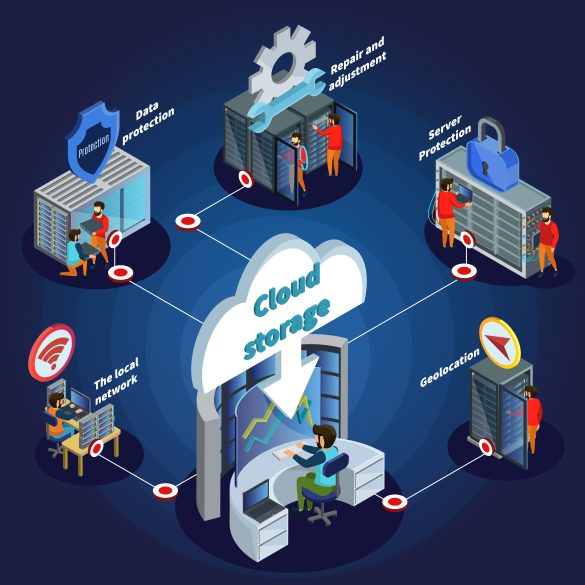Table of Contents
Introduction
In the fast-changing landscape of Software-as-a-Service (SaaS), companies need to continuously adjust to emerging technological trends to stay ahead. One of the most notable changes in recent years has been the shift of SaaS platforms to cloud environments. Migrating to the cloud brings numerous advantages, including cost savings, improved scalability, enhanced security, and better performance. As businesses aim to modernize their SaaS solutions, transitioning to the cloud has become essential rather than optional. This article delves into the primary benefits of cloud migration for SaaS platforms and explains why it is a vital step for achieving sustainable growth.
1. Cost Efficiency
One of the main reasons SaaS businesses move to the cloud is to save on costs. Traditional on-premises setups require hefty upfront investments in hardware, maintenance, and IT staff. By migrating to the cloud, many of these expenses are eliminated, as it offers a pay-as-you-go model that allows businesses to only pay for the resources they actually use.
Key Cost Benefits of Cloud Migration:
Reduced Capital Expenditure (CapEx): There’s no need for costly hardware and data center management.
Lower Operational Costs: Cloud providers take care of system updates, security patches, and maintenance.
Energy Efficiency: Cloud infrastructure is designed to optimize energy use, which helps lower electricity bills.
By transitioning to a cloud-based model, SaaS companies can use their financial resources more effectively, focusing on innovation instead of infrastructure upkeep.
2. Scalability and Flexibility
SaaS businesses often face varying demands, which makes scalability essential for their success. Cloud-based platforms enable the smooth adjustment of resources according to real-time usage requirements.
Advantages of Cloud Scalability:
Automatic Scaling: Effectively manages traffic spikes without the need for manual adjustments.
Elastic Computing Resources: Allocates processing power and storage dynamically as required.
Global Expansion: Facilitates the easy deployment of applications across different geographic regions to improve user experience.
This adaptability allows SaaS providers to support growth while ensuring high availability and performance.
3. Enhanced Security and Compliance
Security is a major concern for SaaS providers due to the sensitive nature of customer data. Leading cloud providers make substantial investments in security infrastructure, delivering features that often exceed those of traditional on-premises solutions.
Security Benefits of Cloud Migration:
Advanced Encryption: Safeguards data both at rest and during transmission.
Automated Threat Detection: AI-driven monitoring detects and addresses security threats in real time.
Regular Security Updates: Cloud vendors provide timely patches to close potential vulnerabilities.
Compliance Readiness: Adheres to regulatory standards such as GDPR, HIPAA, and ISO 27001.
By utilizing cloud security tools, SaaS businesses can greatly minimize the risk of cyberattacks and maintain compliance with industry regulations..
4. Improved Performance and Reliability
SaaS applications need to maintain high uptime and quick response times to provide users with a smooth experience. Cloud platforms deliver optimized infrastructure that guarantees reliability and reduces downtime.
Key Performance Enhancements:
Global Content Delivery Networks (CDNs): These networks help decrease latency and enhance load times for users around the globe.
High Availability Architectures: Having redundant cloud servers minimizes the chances of service interruptions.
Automated Backups and Disaster Recovery: Cloud-based solutions for disaster recovery enable rapid data restoration in the event of failures.
By transitioning to the cloud, SaaS providers can significantly improve user satisfaction with an application that consistently performs well.
5. Faster Innovation and Deployment
Innovation is crucial for SaaS businesses to stay competitive. Cloud migration speeds up development cycles by offering access to advanced tools, services, and automation capabilities.
How Cloud Migration Boosts Innovation:
DevOps Integration: Cloud platforms facilitate CI/CD (Continuous Integration/Continuous Deployment) for quicker releases.
AI & Machine Learning Services: Allow SaaS applications to utilize predictive analytics and automation.
Serverless Computing: Minimizes the need for infrastructure management, enabling developers to concentrate on feature development.
With the cloud’s strong ecosystem, SaaS companies can quickly test new features and launch them to market more efficiently.
6. Seamless Integration and Collaboration
Cloud-based SaaS platforms offer simpler integration with third-party applications and services, which helps streamline business operations.
Integration Benefits:
API-Driven Connectivity: Cloud environments utilize RESTful APIs to ensure seamless data exchange.
Multi-Tenant Architecture: This design allows for improved resource sharing among various customers while maintaining data privacy.
Remote Work Enablement: It supports collaboration among distributed teams through cloud-based tools such as Google Workspace, Microsoft 365, and Slack.
This connectivity boosts operational efficiency, making it easier to work with external partners, customers, and internal teams.
7. Sustainable and Environmentally Friendly Operations
As environmental concerns continue to rise, businesses are increasingly prioritizing sustainability. Cloud providers manage extensive data centers designed to enhance energy efficiency and minimize carbon footprints.
Cloud’s Role in Sustainability:
Optimized Power Consumption: Utilizing shared infrastructure leads to lower overall energy consumption.
Renewable Energy Adoption: Leading cloud providers are investing in green energy projects.
Reduced IT Waste: This approach decreases the necessity for physical hardware upgrades and disposal.
By transitioning to the cloud, SaaS companies play a vital role in fostering a greener, more sustainable IT ecosystem.
Conclusion
The advantages of migrating to the cloud for SaaS platforms are clear. With benefits like cost savings, enhanced security, improved performance, and the potential for innovation, the cloud offers a robust infrastructure for SaaS providers. As companies increasingly adopt digital transformation, leveraging cloud technology has become a strategic necessity rather than just an option.
To remain competitive, SaaS companies must focus on cloud migration to achieve scalability, security, and operational efficiency. Whether they are startups or large enterprises, transitioning to the cloud can open up new avenues for growth and lay the groundwork for sustained success.
By adopting cloud migration, SaaS platforms can prepare themselves for a future characterized by agility, resilience, and ongoing innovation.

